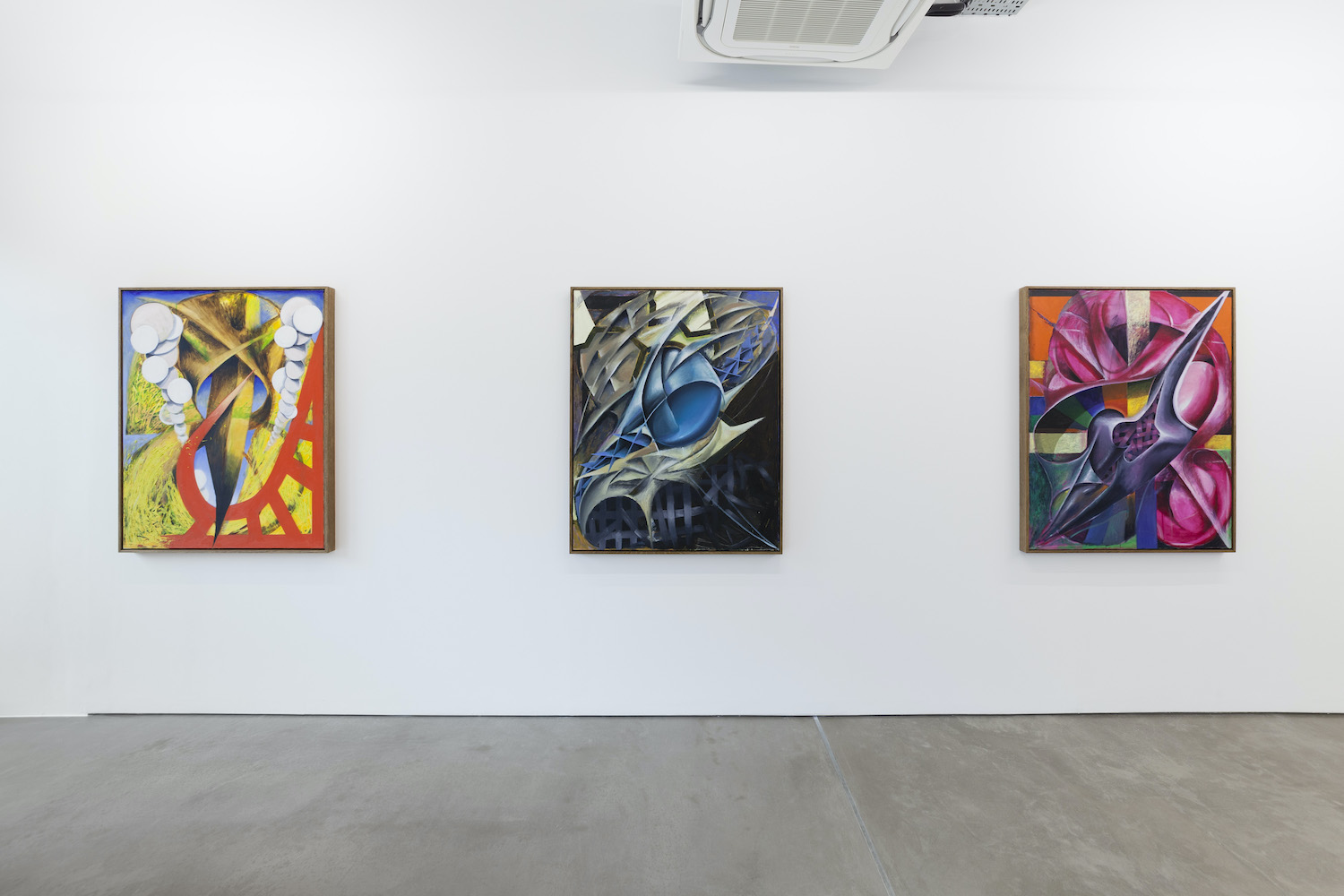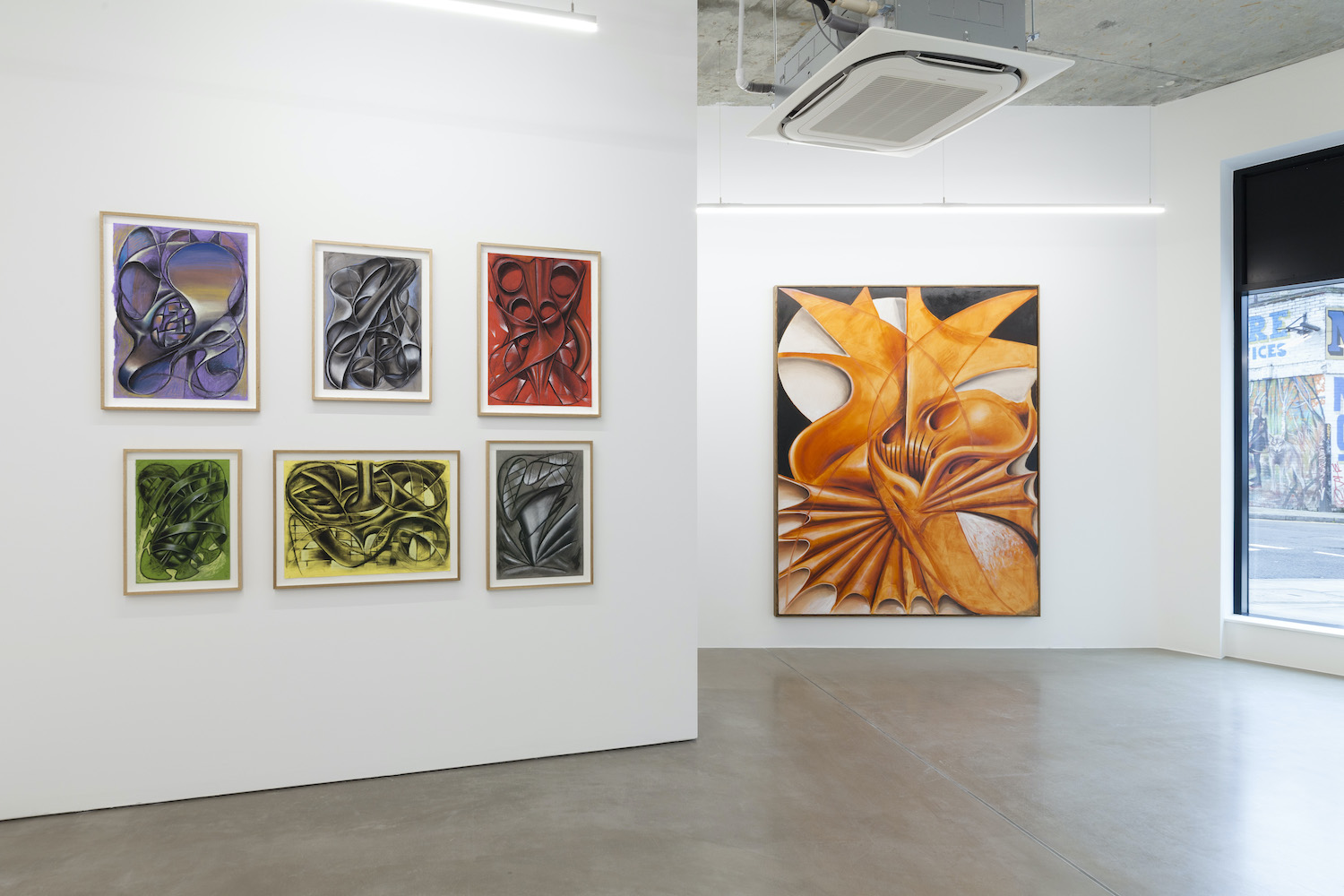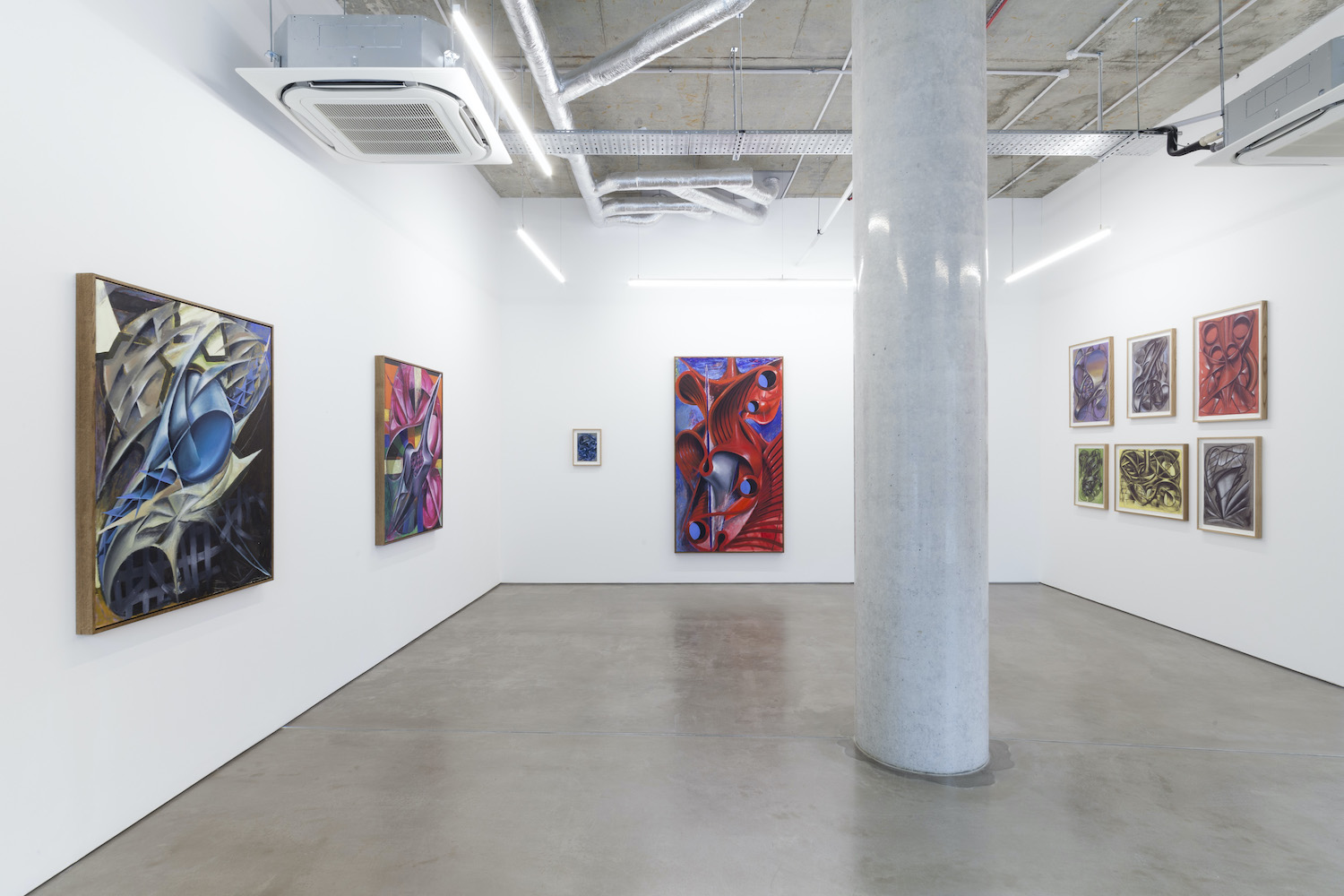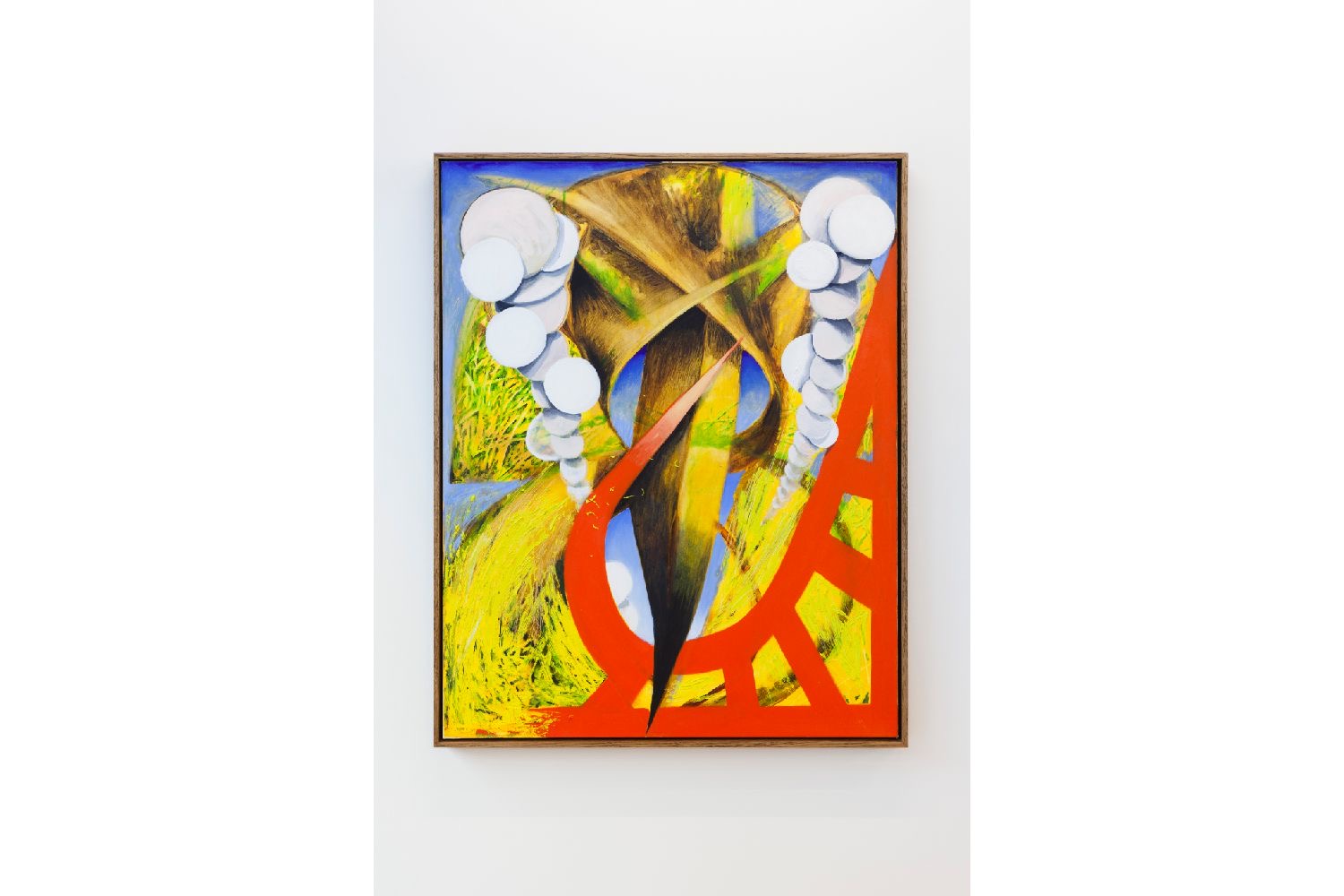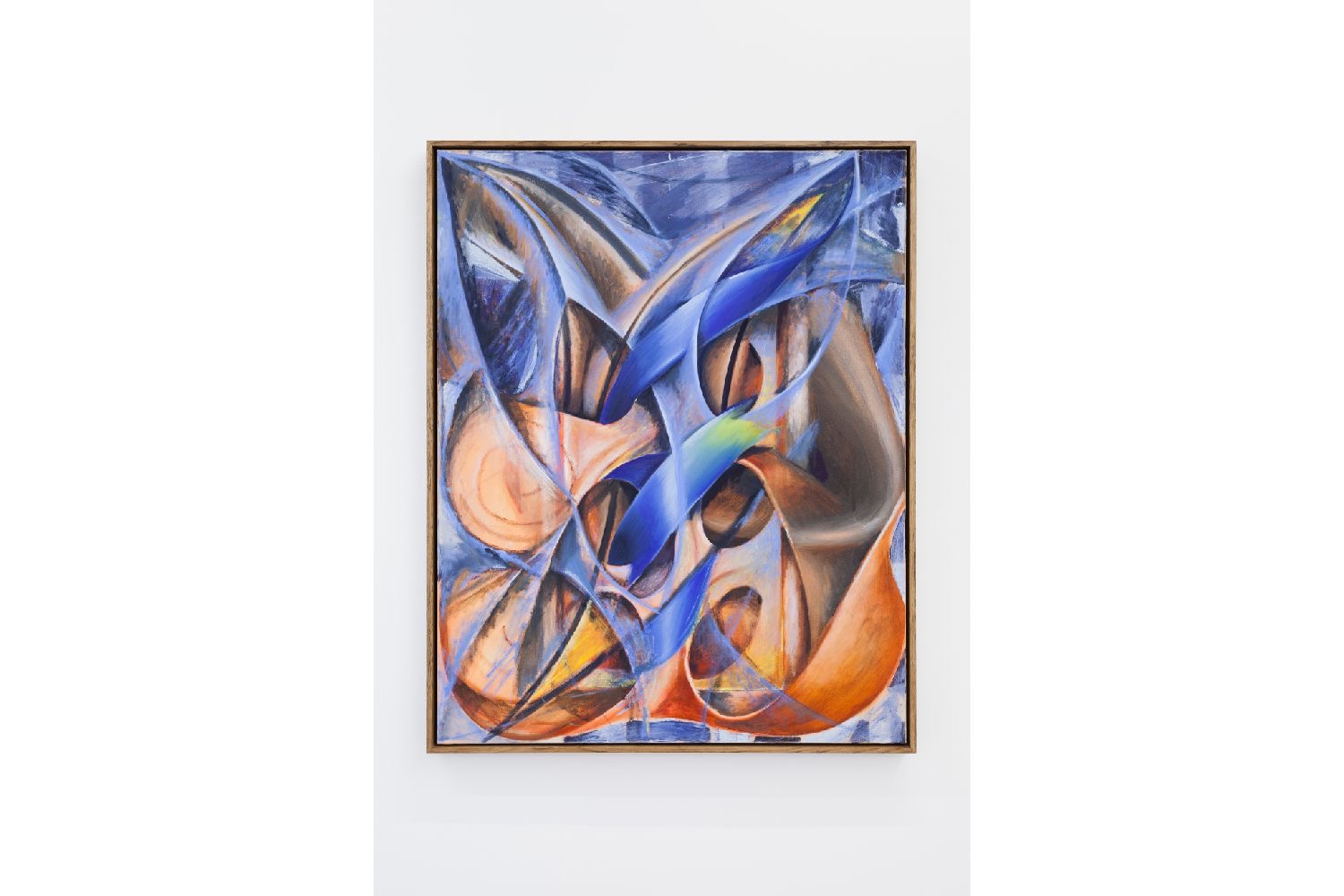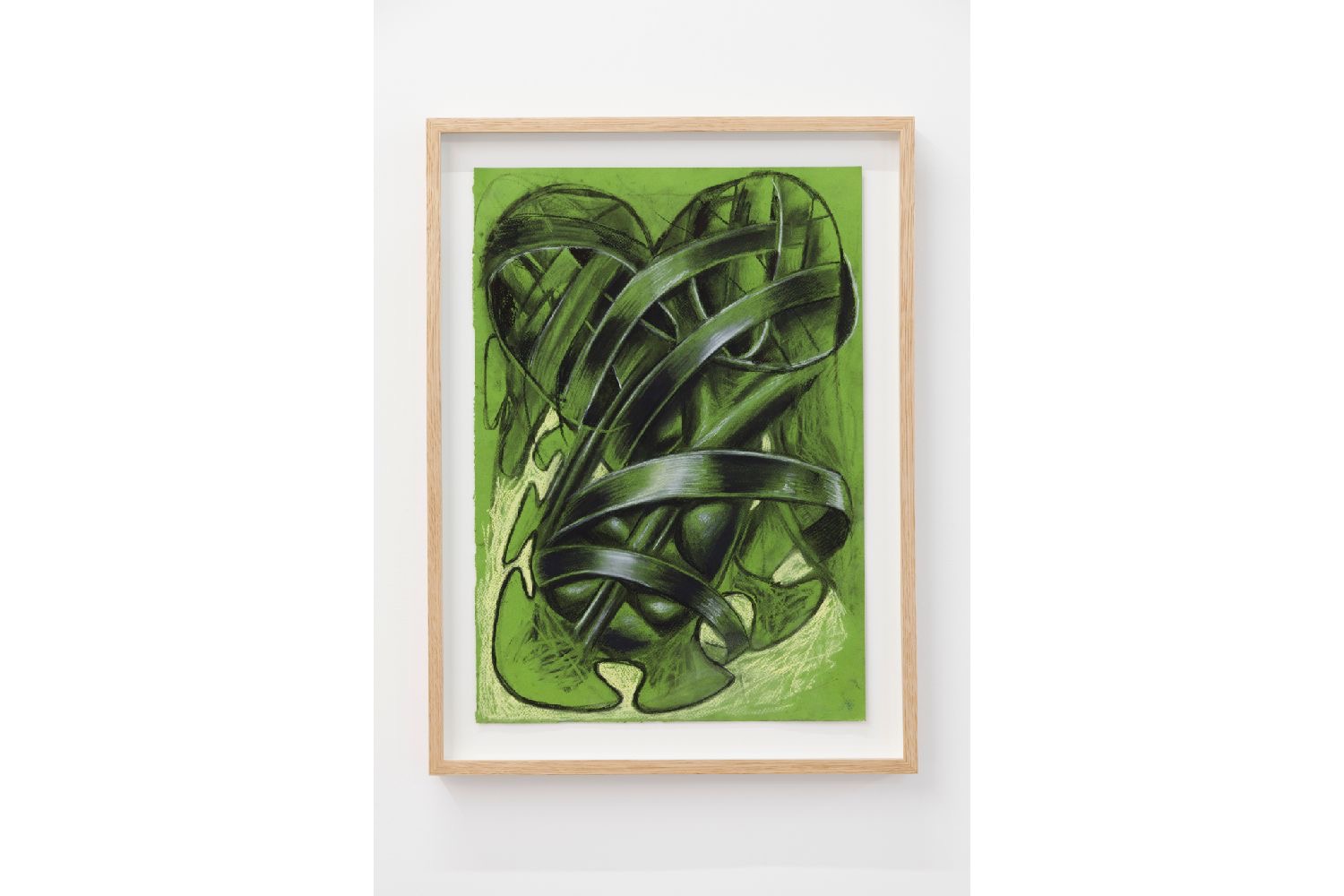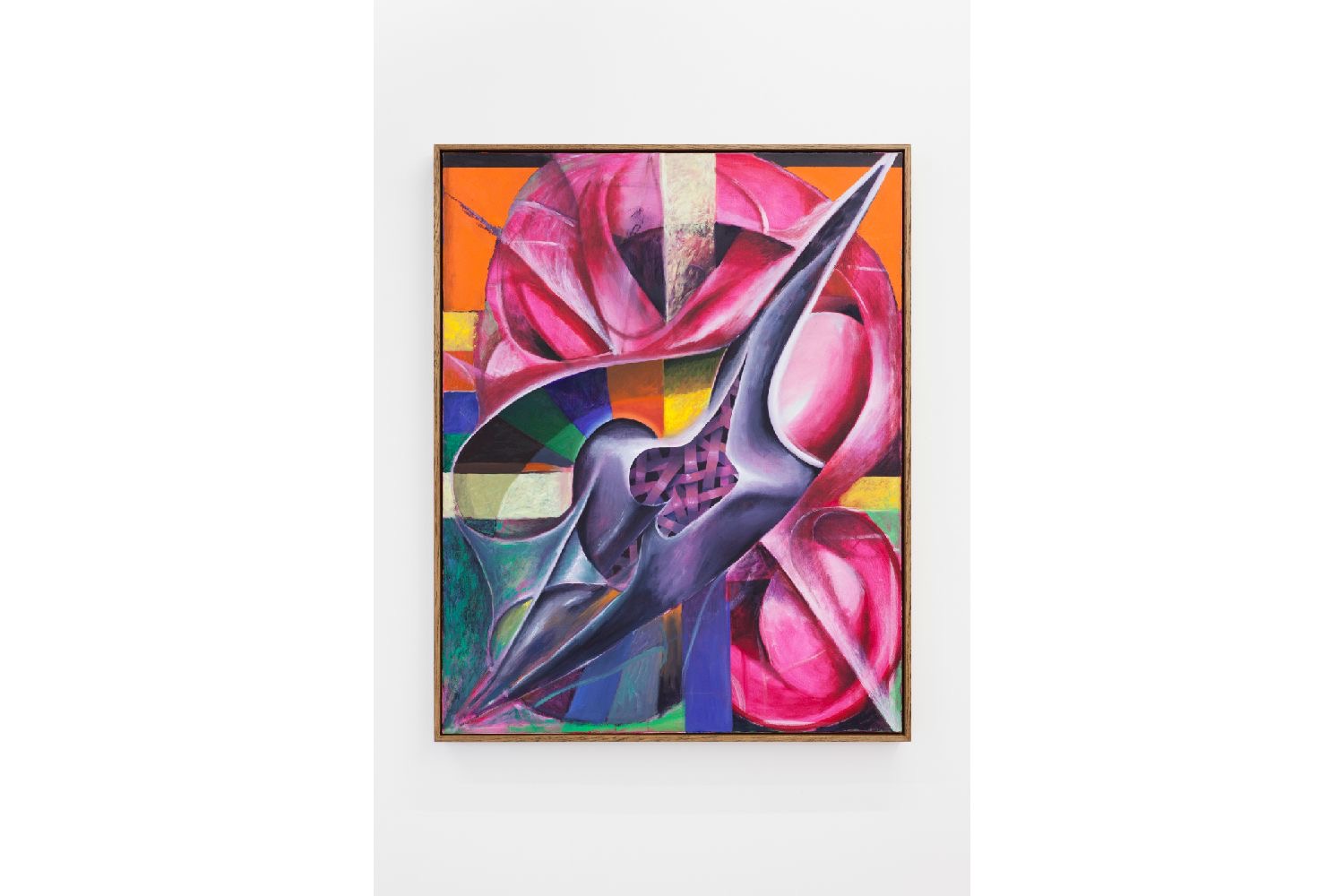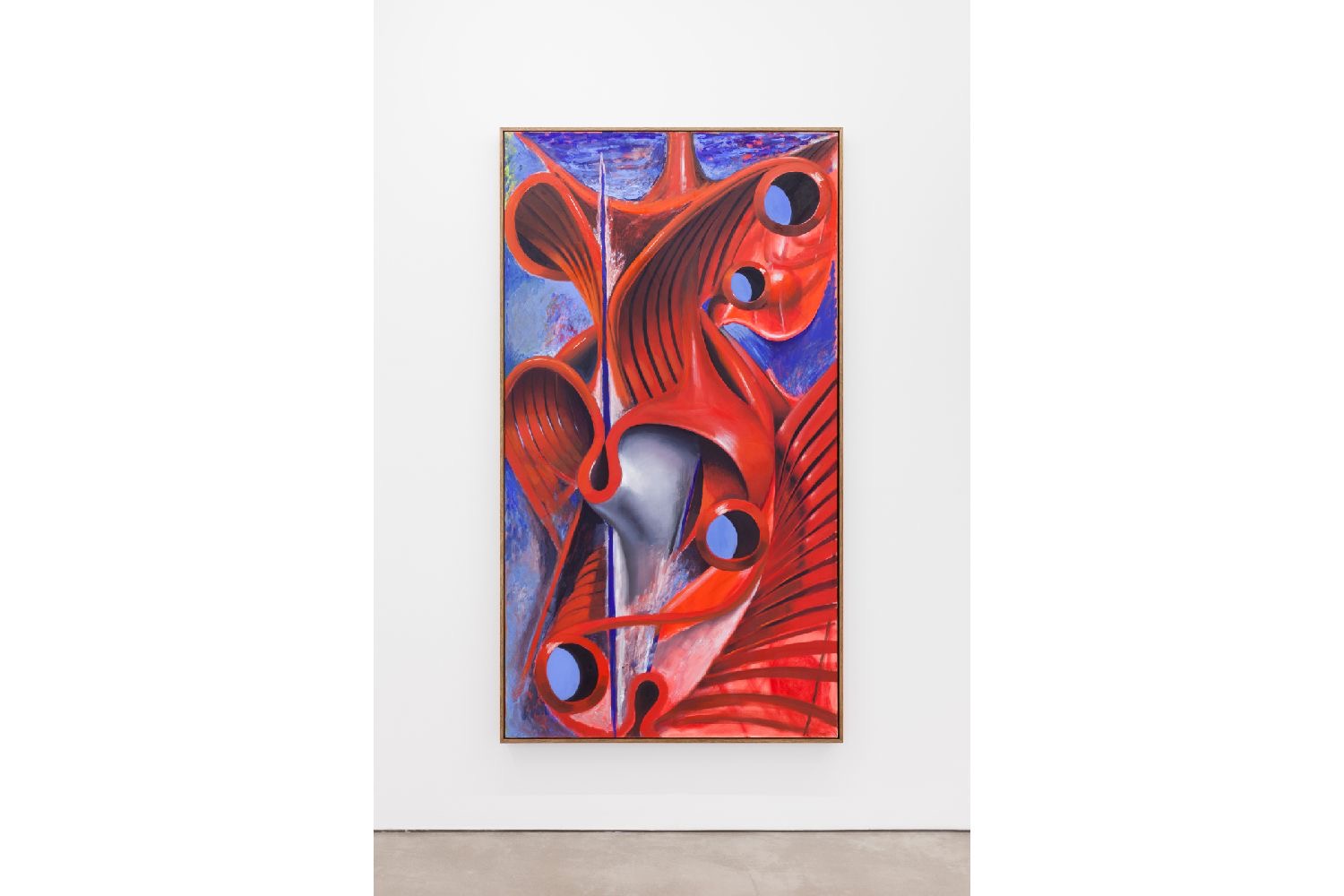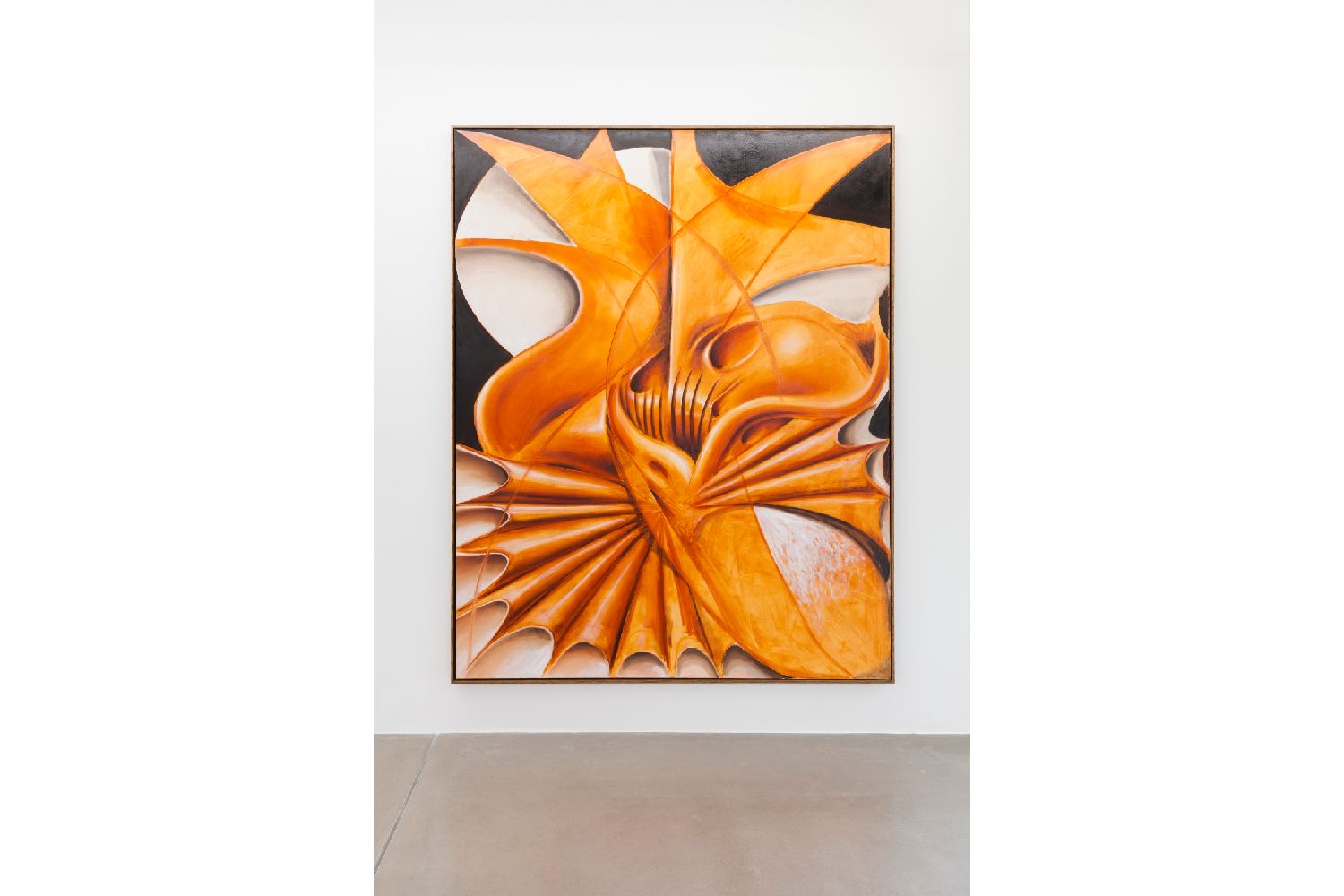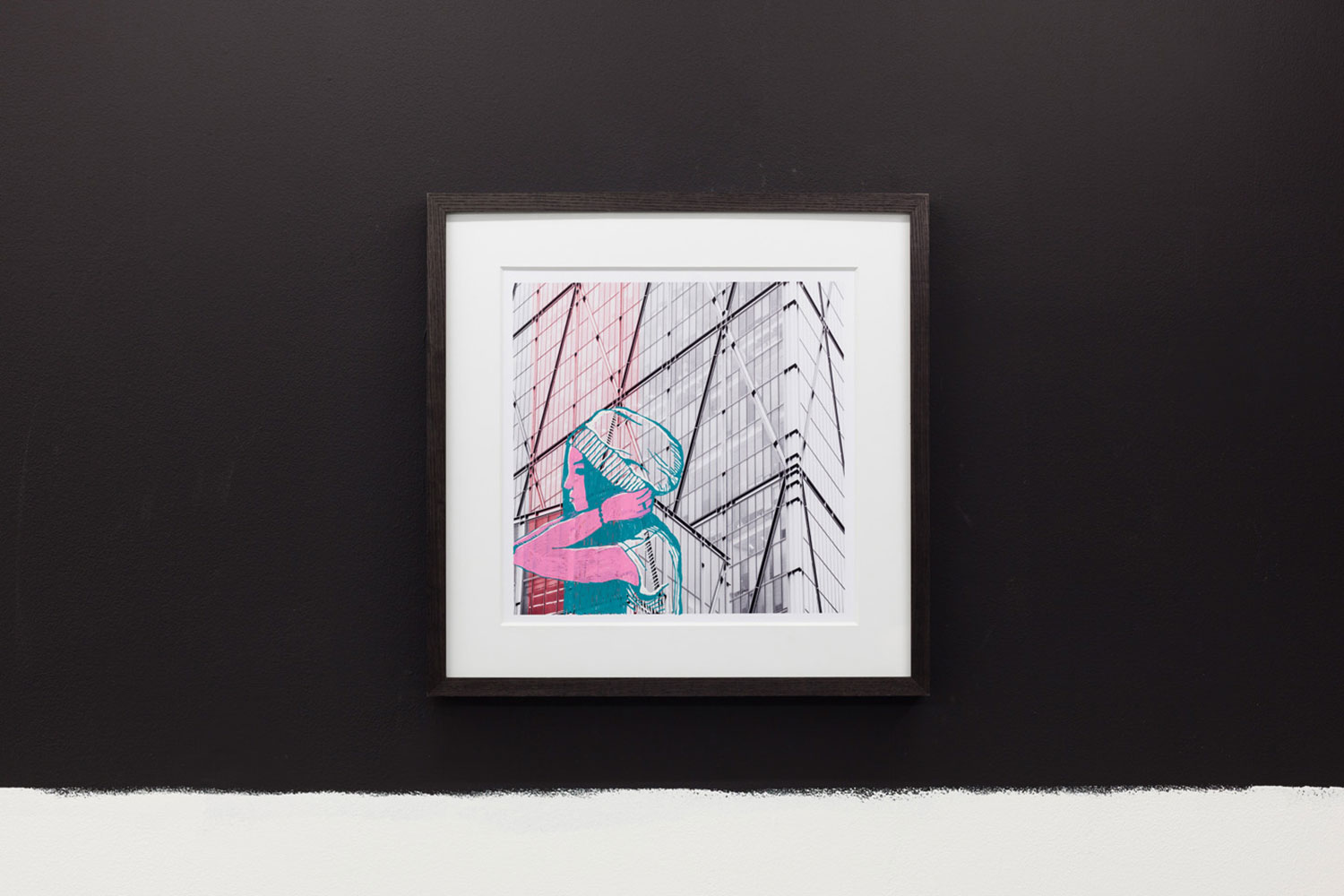Roiling space, deep time, off radar. Some kind of churning galactic volume is given over, like nakedness or the way a night sky induces heightened receptivity and openness. The forms of Sean Steadman’s paintings rupture composition into toned, plasmic chaos at turns earthly, vehicular, facial, celestial, or mechanical. For his exhibition “1,000,000,000,000” at Project Native Informant, a trillion is an apt, impossible place to affix these contending impressions.
Across the fourteen works displayed — predominantly oil on canvas, with a set of pastel and charcoal drawings — Steadman’s eye clearly marshals space, even if its structure is utterly mercurial. Each work is titled with one word and framed uniformly, the language physical: Plume, Gibbous, Nape, Veil, Schist, Rive. It is a dialectic of schism, sediment, breakage, the pulverulent and protuberant. These pithy titles loosen the works as portraits/portals of space. Take Nape (all works 2020). Cut diagonally, its pulsing magenta unloads a metallic-lilac talon, its innards bacterial webbing that shrouds an inscrutable core.
Works swell with an excess of meaning, vertiginous and oxygenated: Ort, Lune, Canto. In his slippery line and divisive torsion I think: canker, worm, mildew, iron. It is fungal, orbital, orgiastic. Steadman’s topology is contradictorily active: little orbs coagulate as nested vessels, incidental like spittle that gathers in the mouth; pleated furrows suggest koi fish fins that taper into flaring crests and amphibian inflammations — all caught in orange amber, that gem of slow, prehistoric catastrophe.
In Rive, licorice-red arteries curl and bulge, creating a kyphotic, undulating tower punctured by portholes. Its scale suggests the monolithic, but a splayed wing on the lower right implies an unraveling shell, a coiling form produced of mere ribbons. In this masticating logic, a subtle, knife-thin slit of cobalt, which dissects the form, could be its titular trauma.
Steadman is adept at treating the fold. As per Deleuze, it solicits a reorientation of subjectivity; the fold announces that the inside is nothing more than a fold of the outside. Superabundant, the fold ripples through material selves, time, and memory. Steadman’s paintings encapsulate a literal ad infinitum. Despite this, the paintings are geared toward their compact objectivity. However corseted, perforated, entangled, swollen, or torn, each insists on aggregation through anarchic exposure.

